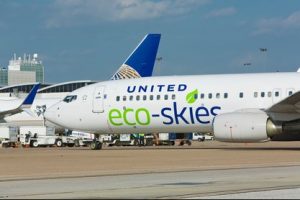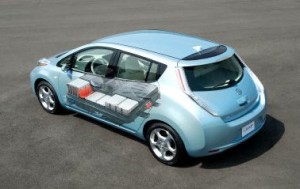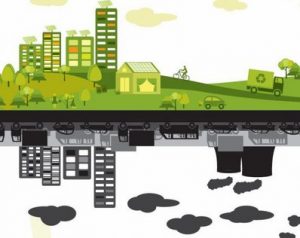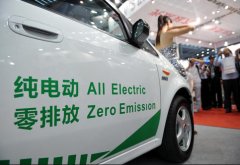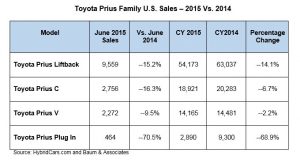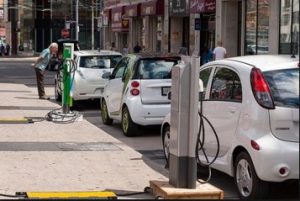by Jon LeSage, editor and publisher, Green Auto Market
Here’s my take on the 10 most significant and interesting occurrences during the past week…….
 AFV training schedule: The National Alternative Fuels Training Consortium (NAFTC) has released its fall alternative fuel vehicle training schedule ideal for professionals serving the clean transportation space – including service technicians, fleet managers, municipalities, and consumers interested in learning about alternative fuel vehicles The schedule includes courses for automotive technicians, including Light-Duty Natural Gas Vehicle Training, Compressed Natural Gas (CNG) Vehicle Fuel System Inspector Training, and Electric Drive Vehicle Automotive Technician Training. The schedule also includes the Hydrogen, Hydrogen Vehicle, and Hydrogen Fleet Awareness Workshop. All classes feature a combination of classroom and hands-on training and will be held at the NAFTC headquarters in Morgantown, WV. Continuing Education Units from West Virginia University are available for all training classes.
AFV training schedule: The National Alternative Fuels Training Consortium (NAFTC) has released its fall alternative fuel vehicle training schedule ideal for professionals serving the clean transportation space – including service technicians, fleet managers, municipalities, and consumers interested in learning about alternative fuel vehicles The schedule includes courses for automotive technicians, including Light-Duty Natural Gas Vehicle Training, Compressed Natural Gas (CNG) Vehicle Fuel System Inspector Training, and Electric Drive Vehicle Automotive Technician Training. The schedule also includes the Hydrogen, Hydrogen Vehicle, and Hydrogen Fleet Awareness Workshop. All classes feature a combination of classroom and hands-on training and will be held at the NAFTC headquarters in Morgantown, WV. Continuing Education Units from West Virginia University are available for all training classes.- Mcity seeing investors: Ford, General Motors, Honda, and Toyota are among the companies each investing $1 million over three years in the University of Michigan’s Mcity. This testing ground if considered to be the first controlled environment specifically designed to measure the potential of connected and automated vehicle technologies that will lead the way to mass-market driverless cars. Thirty-three Affiliate Members are also contributing, and investing $150,000 over three years, to the University of Michigan’s Mobility Transformation Center. Current Leadership Circle companies are: Delphi Automotive, Denso, Econolite Group, Ford, GM, Honda, Iteris, Navistar, Nissan, Qualcomm Technologies, Robert Bosch, State Farm, Toyota, Verizon Communications, and Xerox.
- China following California: China has been learning lessons from government policies in California to encourage automakers and consumers to purchase plug-in electric and hybrid vehicles. China’s program will extend incentives for hybrids, which had been downplayed due to the strong presence of Japanese automakers like Toyota in that market segment. Chinese carmakers such as BYD Co and SAIC Motor Corp. will benefit, but so will global rivals on a more level playing field.
- GM investing $5B: General Motors will be spending $5 billion over the next decade on a new family of Chevrolet models aimed at emerging markets such as China, India, Brazil and Mexico. Most will be small cars but may include crossovers. “This new vehicle family will feature advance technologies focused on connectivity, safety and fuel efficiency delivered at a compelling value,” said Mark Reuss, GM executive vice president.
- EPA certification: The U.S. Environmental Protection Agency (EPA) has certified Blossman Services’ propane-autogas-powered Ford Transit van. Blossman upfits the Transit with a Prins bi-fuel VSI 2 system with Ford’s 3.7-liter V-6 engine.The bi-fuel system is designed to cut installation time in half and ensure consistent performance, says Alliance AutoGas, which is managed by Blossman Gas.
- Prius Plug-In range extension: Editors at Green Car Reports have recently heard from an industry source that the next Toyota Prius Plug-In Hybrid will have “30 to 35 miles” of rated battery range. The fourth-generation 2016 Prius hybrid is expected to launch within the next few months. The company has said that the plug-in hybrid version will lag the conventional hybrid model by about a year.
- EVs vs. hydrogen: A recent Green Car Reports article dealt with hydrogen fuel cell car drivers being frustrated with the unreliability of current hydrogen fueling stations in Southern California. That story has accumulated more comments than any other article published in Green Car Reports, with about 2,000 coming in by the end of the day. Opinions expressed by electric vehicle (EV) advocates were similar to public comments made by Tesla Motors CEO Elon Musk; they disdain hydrogen fuel cell vehicles and think there’s been way too much attention on that technology and fuel this year. Drivers of hydrogen-powered cars tend to be just as, or more, passionate about the topic as EV drivers – but their numbers are so far much smaller.
- NGV refueling stations: Navigant Research expects to see huge growth in global natural gas vehicle (NGV) refueling stations – from 23,001 this year to 38,890 in 20205. A large drivers of this trend will be fleets making NGV acquisitions. “As fuel economy and greenhouse gas emissions standards become increasingly stringent in world markets—particularly for medium and heavy duty vehicles (MHDVs), where electrification is less practical— (natural gas) is becoming an attractive alternative to diesel,” the study says.
- Apple buying technology from BMW?: German business magazine Manager has reported that Apple proposed to BMW that the i3 – or parts of it – could form the basis of Apple’s own electric-car project. Apple had no comments to make, and has been staying in secrecy about its plans to enter the automotive industry as a manufacturer.
- Coal-powered plants: The U.S. Energy Information Administration predicts that coal’s share of U.S. electricity generation will decline from 44% in 2011 to 32% in 2040. Most of these coal-powered plants are located in or near Virginia, West Virginia, Kentucky, Ohio, and Indiana, which are accounting for 8GW of the expected retirements. The rest of the 13-GW total will include plants in Alabama and the Midwest.

